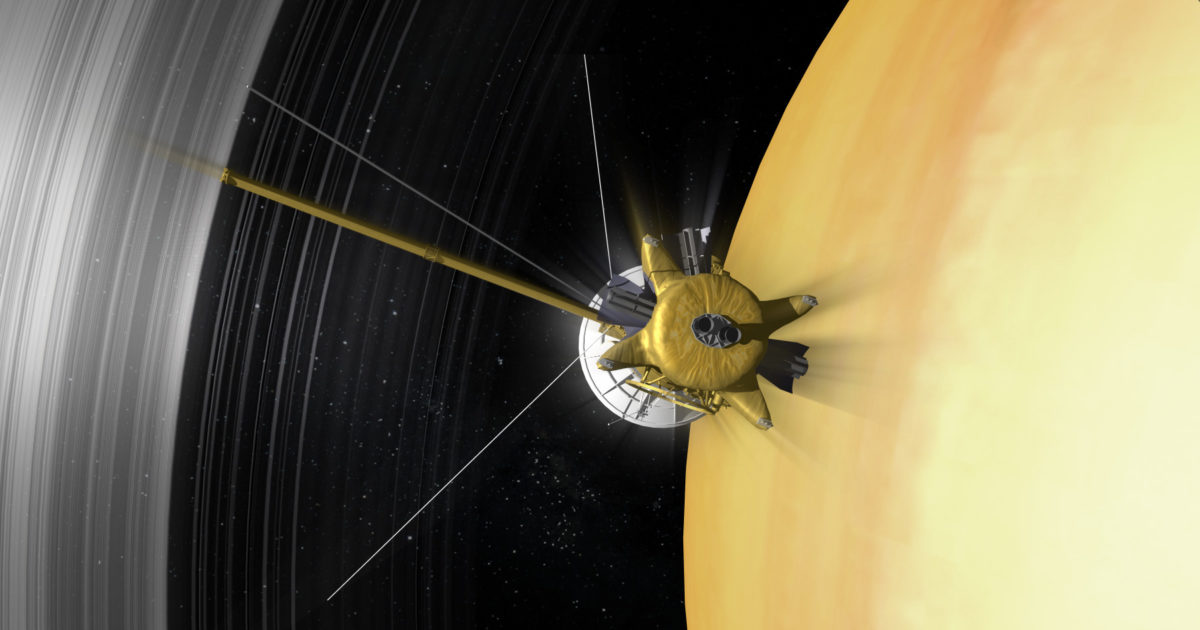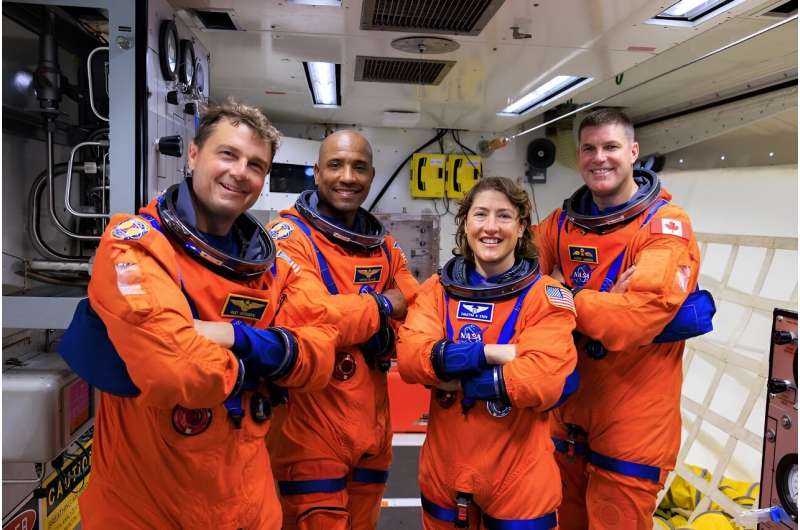Science
Watch SpaceX’s Ax-2 private astronaut launch in this free livestream May 21
|
|
SpaceX’s next private spaceflight will launch four astronauts to the International Space Station on Sunday (May 21) and you can watch the mission live online in a series of free webcasts.
The Ax-2 mission is the second all-private flight to the station by SpaceX for the company Axiom Space and will launch from Pad 39A at NASA’s Kennedy Space Center in Cape Canaveral, Florida. Liftoff is scheduled for 5:37 p.m. EDT (2137 GMT) on Sunday. You can follow it live with our Ax-2 mission updates page.
The Ax-2 mission is commanded by former NASA astronaut Peggy Whitson, with a paying customer — investor and entrepreneur John Shoffner — serving as pilot. Saudi Arabia is flying two of its newest astronauts, Ali AlQarni and Rayyanah Barnawi, to the station on the flight, with Barnawi set to become the first Saudi woman to fly in space. Here’s how to watch their 10-day mission, which includes eight days on the space station.
Sunday, May 21: Ax-2 launch webcast
NASA and SpaceX will each offer live webcasts of the Ax-2 astronaut launch, with SpaceX’s livestream beginning at 2 p.m. EDT (1800 GMT). Space.com will simulcast the launch on our website and on this page.
SpaceX’s YouTube livestream is expected to show the Ax-2 crew as they prepare for flight in their sleek spacesuits, head to the launch pad in black Tesla electric cars and board their Dragon capsule Freedom. Liftoff is at 5:37 p.m. EDT (2123 GMT), and should include coverage of SpaceX’s Falcon 9 rocket first stage returning to Earth to attempt a landing at the company’s pad at Cape Canaveral Space Force Station.
NASA’s YouTube livestream will begin at 4:30 p.m. EDT (2030 GMT) and running through liftoff just over an hour later.
“Today’s launch coverage is led by Axiom Space, with support from NASA and SpaceX; NASA’s primary mission responsibilities begin during Freedom’s approach to the International Space Station, the start of Ax-2 integrated operations,” NASA explained for the webcast.
Monday, May 22: Ax-2 Dragon docking – 7:30 am ET
RELATED STORIES:
The Ax-2 crew will arrive at the International Space Station on Monday, May 22, at 9:24 a.m. EDT (1324 GMT), but you’ll be able to watch their approach for nearly two hours before they dock.
NASA will provide a live webcast on May 22 at 7:30 a.m. EDT (1130 GMT) to chronicle the Dragon Freedom’s approach and docking on NASA TV and via its YouTube channel. The livestream will not end with docking. Instead, NASA will continue to webcast the Ax-2 crew’s activities as they open the hatches between their Dragon and the station.
Hatch opening is scheduled for 11:13 a.m. EDT (1513 GMT). The four Ax-2 astronauts will then share some “welcome remarks” at 11:45 a.m. EDT (1545 GMT), NASA officials have said.
Ax-2 undocking and splashdown
While SpaceX, Axiom Space and NASA have not released a schedule for the Ax-2 crew’s return to Earth, it is likely that at least the undocking from the International Space Station will be webcast live, if not the landing itself.
The Ax-2 mission is expected to last about 10 days, placing its undocking sometime around May 31, with splashdown expected shortly thereafter. Once we get more refined details on the mission’s timeline, we’ll be sure to update this page with any undocking and landing livestream events.





Science
Is space science worth the money?


|
|
Why space science is worth the money
Although governments around the world understand the value of basic science, it can be hard to prioritize its funding given the variety of competing needs within a nation. NASA’s space science programs in 2024 amount to roughly 0.1% of annual U.S. spending, which represents a decrease in recent years. As such, space science sometimes needs to rely on justifications beyond its intrinsic value.
In a famous 2007 speech, former NASA Administrator Mike Griffin differentiated between the “real” and “acceptable” reasons for exploring space. “Acceptable” reasons for space exploration are logical, quantifiable, policy-friendly justifications. The “real” reasons, on the other hand, are intuitive, grand, emotional, and difficult to quantify. Both types of reasons are valid, and together they help explain why space science is worth the investment.
Some of the “acceptable” reasons for space science involve economic payoffs. Research has found that countries that invest more in basic research, including space science, see a return on investment in their overall economic performance and growth. This effect is dispersed throughout the economy through highly skilled, well-paying jobs. It also has an indirect effect on the economy: Discovery leads to technology and invention, which leads to new products, jobs, and industries. While technology development isn’t the primary goal of space science, this kind of progress would eventually stagnate if basic scientific research were neglected.
Another policy-friendly reason to invest in space science is that many scientific missions are internationally collaborative and contribute to allyship with other nations. There is also the very pragmatic goal of understanding Earth, the planet on which we all depend, by studying other planets and their histories. Venus, for example, was once an Earth-like world that eventually devolved into an inhospitable hellscape. By understanding that planet, we can work to prevent a similar fate for our own.
But, as Griffin explains, much of what humans do, from falling in love with one’s spouse to enjoying one genre of music more than another, is based on emotional and intuitive motivations. This is a human characteristic, and it plays out in our drive to understand the Universe and our place within it. In many ways, this is why we invest in space science: we want to go to new places and discover new things, witness the beauty and majesty of the Cosmos, understand where we came from and what might be possible in our future, and achieve astonishing feats.
Awe, wonder, and inspiration are among the “real” reasons for conducting space science. These are benefits that people can enjoy but that are impossible to quantify or justify on a budget balance sheet. Still, they are some of the most powerful motivators for studying the Universe and our place within it.





Science
Space exploration: A luxury or a necessity? – Phys.org


This article has been reviewed according to Science X’s
editorial process
and policies.
Editors have highlighted
the following attributes while ensuring the content’s credibility:
fact-checked
trusted source
written by researcher(s)
proofread
“Oh, come on Daniel, space travel is so expensive, and pointless!” These were the words of my friend Max, during a Christmas party where I was discussing my thesis project: studying places on Earth where the living conditions are so extreme, they could hold lessons for future space missions.
This disdainful attitude toward space research is actually quite common.
Space exploration is currently booming. Just think of the Artemis missions, SpaceX’s ambitious plans for Mars, the deployment of the James Webb telescope or the recent “race to the moon.”
A number of large-scale projects are getting the green light now, mainly from NASA, including the Artemis II mission that will carry four astronauts to the moon, which will have Canadian astronaut Jeremy Hansen aboard. This will be a first since 1972. Incredibly, it’s been 50 years since the last human mission to Earth’s natural satellite.
Although many people find space exploration inspiring, others are skeptical and even angered by what they see as an unjustifiable waste of resources and money on an activity that only spreads pollution to another place. This sums up the feelings of my friend Max.
In this article, I will try to prove him wrong.
Humans are explorers first
My great curiosity has led me to travel to extreme places so I can study them. But I am not the only one with this desire to explore.
In my Grade 9 history class, my teacher stood on top of her desk and, with a grave and serious tone, went on to act out Jacques Cartier’s arrival in North America in her own, colorful style. A few years earlier, I had learned about how the first humans left their caves to climb mountains. One hundred and thirty years ago, humans sailed further and further south until they saw the glacial landscapes of Antarctica for the first time. At the same time, humans were attempting to dominate the skies and aiming for the beyond with planes and rockets—which is how we got to the moon.
What is the common denominator in our history? Exploration, of course.
Human nature is characterized by a propensity to travel, to look further and to discover. We are all curious by nature. If we stop wanting to explore, we stop being human.
The Earth has rings
So, my friend Max, let me invite you outside. It’s a beautiful, starry night with no moon. It’s a bit cold, but at least the atmosphere isn’t too humid, which makes the sky more transparent. We can see stars flickering. Some are blue, others are red. And the more our eyes adapt, the more the sky reveals its secrets.
Suddenly, something else stands out. It’s another light, but it’s not flashing, and it’s moving quite quickly. A shooting star? No, the atmosphere would have burned it up in a few seconds.
It’s a satellite, one of thousands that orbit the Earth like rings. These satellites are a direct consequence of space exploration. We would be living in a completely different world without them.


Indeed, not an hour goes by in our lives when we don’t use a satellite.
On the one hand, you would likely have gotten lost on your way here, Max, because there would have been no GPS to show you which exit to take. And secondly, I wouldn’t have been able to help you find your way because there would be no wifi. We can push our thinking even further; agriculture, environmental monitoring, communications, the weather, even banks, all of these depend on satellites.
But how does this work? You have to understand that these satellites move so quickly they actually circle the Earth several times a day. Combined with a very large workforce, they provide a complete view of the globe. From the middle of the oceans to the highest mountains and the almost inaccessible poles, we have eyes everywhere. By drawing on this vast quantity of observations, we obtain data on changes to the earth’s surface, the spread of forest fires, the movement of winds, the melting of ice and many other things, while enabling global communication and credit card transactions.
Space exploration was the trigger that enabled us to develop and operate these technologies. And it doesn’t stop there.
Two birds, one stone
The practice of medicine in remote areas also benefits from space exploration. It’s not easy for communities in remote areas to access health care, especially since hospitals don’t always have the sophisticated equipment they need.
If you think about it, when astronauts explore space, they become a small population in a very, very remote region. It’s true. What happens if someone has a really bad stomach ache? Or breaks an arm? They don’t have time to come back home for treatment, so we have to react, and quickly.
Scientific research in telemedicine has developed to address this important issue, producing a number of innovative technologies. And if these are useful for astronauts, why not use them for rural populations, too?
A few years ago, three Québec researchers from different universities were working on a tiny probe that could rapidly analyze and diagnose a blood sample.
Although some prototypes are not yet on the market, others are already in widespread use, such as the ultrasound scanner designed by NASA. This scanner takes precise photos of organs and bones that can be transmitted to a doctor, who will then have crucial information on hand to recommend treatments.
In a way, space exploration provides us with opportunities to respond to urgent needs on Earth. So, Max, are you beginning to see the need for it?
Another perspective
Finally, I have to admit that I find it rather encouraging to see Russians, Americans, Japanese, Canadians and Europeans living together on the Space Station. Not so long ago, some of these countries were attacking each other with nuclear bombs. In space, no such borders exist.
Exploration brings people together. It opens our eyes to new perspectives. It shows us that we’re all in the same boat together. That’s pretty important, don’t you think, Max?
Our planet is magnificent and unique, an oasis of impossible life. But it is fragile. We need to protect it. That’s why exploring beyond the Earth should not be considered a luxury; it’s an investment in our shared humanity.
So, Max, when Jeremy Hansen and his crew take off in 2025, will you be there to watch them?
Provided by
The Conversation
This article is republished from The Conversation under a Creative Commons license. Read the original article.![]()
![]()
Citation:
Space exploration: A luxury or a necessity? (2024, April 16)
retrieved 16 April 2024
from https://phys.org/news/2024-04-space-exploration-luxury-necessity.html
This document is subject to copyright. Apart from any fair dealing for the purpose of private study or research, no
part may be reproduced without the written permission. The content is provided for information purposes only.
Explore further
Through astronaut eyes, virtual reality propels gateway forward
Science
Mysterious object that hit Florida man's roof was part of the International Space Station – CBC News


When a strange object hit Alejandro Otero’s home in Florida, he had to return early from vacation. Once he got in touch with NASA, he learned it was a piece of space junk from the International Space Station.
The object was a piece of space junk that was expected to burn up in Earth’s atmosphere
NASA confirmed Monday that a mystery object that crashed through the roof of a Florida home last month was a chunk of space junk from equipment discarded at the International Space Station (ISS).
The cylindrical object that tore through the home in Naples on March 8 was subsequently taken to the Kennedy Space Center in Cape Canaveral for analysis.


The space agency said it was a metal support used to mount old batteries on a cargo pallet for disposal. The pallet was jettisoned from the space station in 2021, and the load was expected to eventually fully burn up on entry into Earth’s atmosphere, but one piece survived.
The chunk of metal weighed 0.7 kilograms and was 10 centimetres tall and roughly four centimetres wide.
Homeowner Alejandro Otero told television station WINK at the time that he was on vacation when his son told him what had happened.
Otero came home early to check on the house, finding the object had ripped through his ceiling and torn up the flooring.
“I was shaking. I was completely in disbelief. What are the chances of something landing on my house with such force to cause so much damage,” Otero said. “I’m super grateful that nobody got hurt.”


-
Media19 hours ago
Trump Media plunges amid plan to issue more shares. It's lost $7 billion in value since its peak. – CBS News
-
Real eState23 hours ago
Real estate mogul concerned how Americans will deal with squatters: ‘Something really bad is going to happen’ – Fox Business
-



 Tech23 hours ago
Tech23 hours agoJava News Roundup: JobRunr 7.0, Introducing the Commonhaus Foundation, Payara Platform, Devnexus – InfoQ.com
-



 Sports22 hours ago
Sports22 hours agoRafael Nadal confirms he’s ready for Barcelona: ‘I’m going to give my all’ – ATP Tour
-
Science23 hours ago
Total solar eclipse: Continent watches in wonder – Yahoo News Canada
-



 Investment20 hours ago
Investment20 hours agoLatest investment in private health care in P.E.I. raising concerns – CBC.ca
-
Media22 hours ago
Meta's news ban changed how people share political info — for the worse, studies show – CBC.ca
-



 Politics22 hours ago
Politics22 hours agoQuebec employers group urges governments to base immigration on labour needs, not politics – CityNews Montreal




